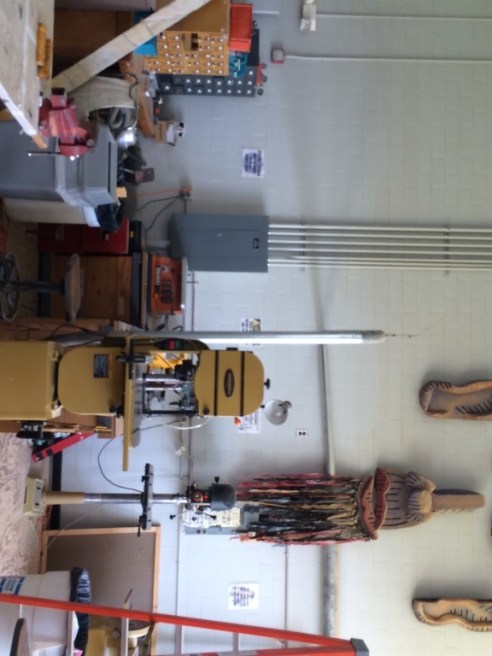Ana Cracion isn’t the typical artist covered by our Artist Spotlight series this semester. She’s a second year MFA student with the University of Connecticut’s Puppet Arts Program. I caught up with Ana at the Puppet Lab, UConn’s very own puppet facility on Depot Campus, only a short drive from main campus.

M: Where are you from? How did you end up doing puppetry?
A: I’m from Romania. And I did, I think I have a photo when me and my sister, we had bunk beds. So I have a photo. I was maybe four or five. And I have a marionette on strings that I made myself. I didn’t make it, like make it. But do you know those babies, that you know, girls used to have? I had a clown. So I put the clown on strings. And I was like four or five. I can show you that picture. And my path was probably kind of set. Then I was doing a lot of craft when I was a child. I was sculpting in clay and just like getting dirt with my grandmothers farm. And just making from simple not even clay, the clay that pottery makers use, but like dirt because I wasn’t very exposed to an environment that I got to be creative. I think if I would have had, in my hometown, which was like a provincial town. If we had puppet theater more maybe that was, but I think it turned out okay.

M: Do you think people are afraid of the word puppetry?
A: I think they weren’t accustomed with it. I think the tradition—we had puppetry tradition before the communism but when the communism came they made the puppet theater only for children. That’s when they said this was only going to be educational maybe. Because the mentality overall, it was this oppression. They were arresting poets, writers. and Romania in between the wars, it was an extraordinary place. It was like Paris. But then it changed. Everything went into gray and that mentality of scared, and it’s a long story of what was going on there. And you can still feel that mentality. People are saying “no” a lot. They cannot see, they don’t dream. So that’s how I ended up here because I was dreaming. And I was upset that a lot of people are telling no to me and they cannot see what I see.

M: How long does it take, on average, to make a puppet?
A: Well, it depends. If you’re going to make a small figurine for the toy theater, it’s going to take one hour. If you’re going to make a marionette, it can from one week to several weeks, depending on how complex it is. It’s all about just getting out the idea and then putting it, deciding on what materials you’re going to use, how it’s going to move, how you’re going to paint it. It takes as time as the puppet wants to come out.
M: What’s your next project?
A: I’m ready for a new one. This new story found me through a dress. I was wearing a dress one time just doing a project with Sarah. And I looked at the label. And I wanted to buy a similar dress because it’s like a vintage one. And it said “union workers.” And I looked it up on the Internet and I arrived by information to the international ladies garment union. And I found out about a fire that took place in 1911 in New York. Where like 123 women died and they were all seamstresses. And something just made me look forward, look deeper into that and I found out there was a girl from Romania that came with her family in 1907 and she lost her life in that fire. And that made it, I knew that was kind of my story when I started reading about it. But when I saw that there was somebody that was from my country made it more personal. And I want to tell the story of her coming here and just having the same dream as so many other women, just having a normal life or a decent life and getting mixed up in all this union and businessman and the garment industry of the time and ending up in that stupid fire. So this is my project right now.
M: What do you want people to walk away with after a performance of yours?
A: I think just an open mind. And just, you know, the idea that objects are around us and they’ve been around us for a long time and we interact with them and communicate with them. And puppets are objects and puppets or dolls have been with us since we were in caves. That’s how we were telling stories. So moving away from this environment and considering that that’s just something for children. For me, I think people taking a bit, are pushing away a part of their soul. So open their soul back to this land, this world of storytelling. Puppets are our representations in the inanimate world. We explain to ourselves, we explain the world around us through these objects. Puppeteer says yes to each other and the world. This is the message of this place, that they say “Yeah, go ahead, do it, experience it, try it.” even though it might not work, but you tried it. You learned something from it.

You must be logged in to post a comment.